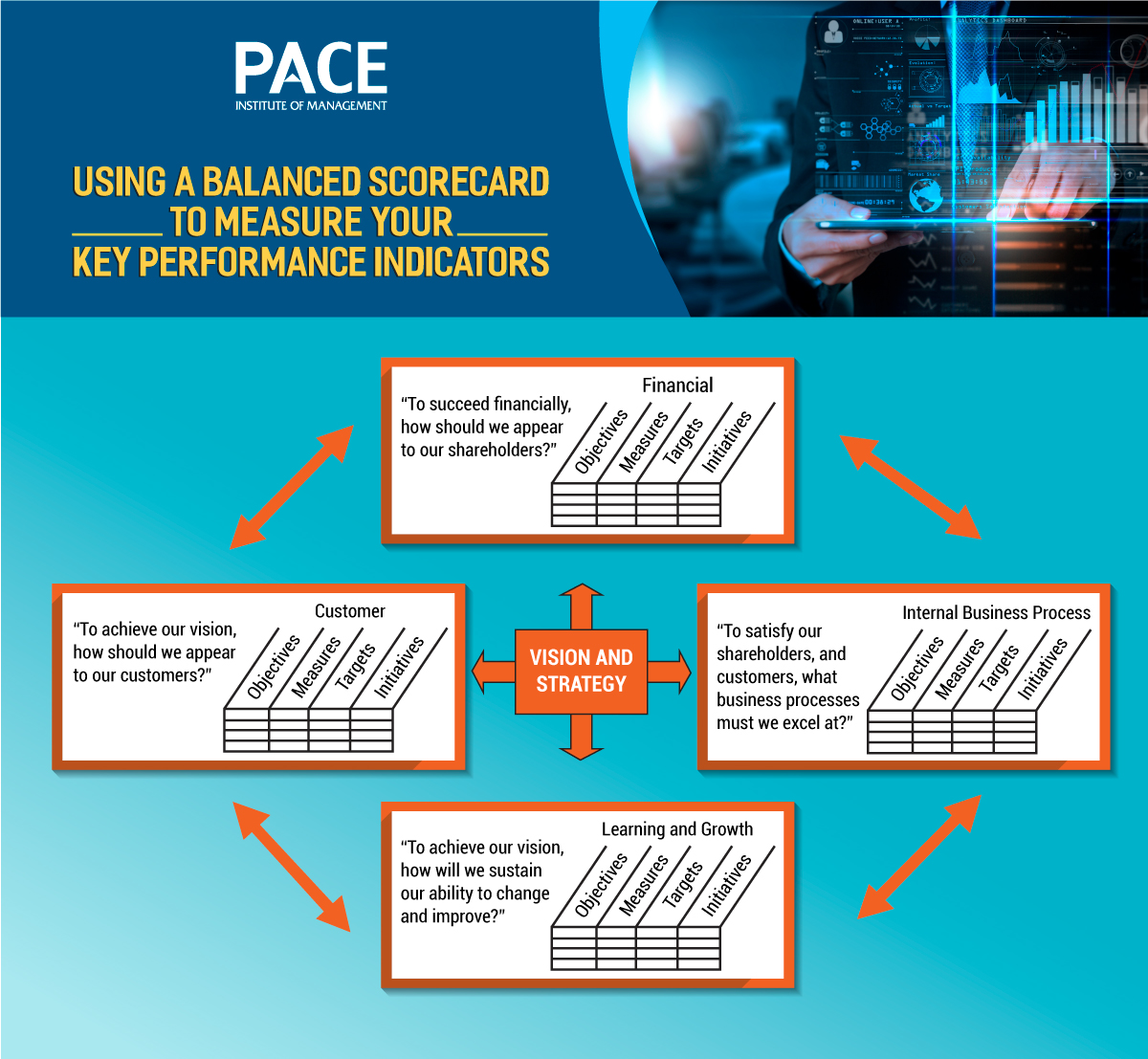Key Performance Indicators (KPIs) are commonly used to help companies effectively manage and guide their progress. Take the case of Blue Frog, for example, where we were able to use accounting KPIs to help quadruple the company’s profits. The whole concept of key performance indicators and a balanced scorecard is to align workers’ performance with the long-term strategic objectives of the company. Like a compass, the key performance indicators help you determine if you are moving in the right direction.
Using KPIs and Balanced Scorecards
To track KPIs, most companies use a Balanced Scorecard. Balanced scorecards have long been used in strategic business management to track key performance indicators and are designed to provide a framework to manage resources.
There are four basic viewpoints or perspectives to take with the KPI balanced scorecard:
- Financial perspective – tracking financial performance.
- Customer perspective – tracking customer satisfaction, attitudes, and market share goals.
- Internal process perspective – covers internal operational goals needed to meet customer objectives.
- The learning and growth or innovation perspective- intangible drivers for future success such as human capital, organizational capital, training, informational systems, etc.
The idea is that these four perspectives are interdependent and hierarchical; growth is driven by constant learning and innovation, which leads to the refinement of internal processes. The improvement in internal processes through the KPI balanced scorecard, then help to drive increases in operating efficiency which result in higher customer satisfaction and increased financial performance. Using this insight, this model has been refined into the concept of the balanced scorecard, described by Robert Kaplan and David Norton. While interpretation of the balanced scorecard varies depending on the source, the basic idea of linking strategy to operational tactics remains sound, and a solid framework to map any company’s progress toward success.

Example of Key Performance Indicators and a Balanced Scorecard in Action
Here is an example of a KPI balanced scorecard in action. A regional airline is looking to increase its profits by increasing revenue and lowering costs (financial perspective), by increasing per-seat revenue and controlling plane lease costs. To achieve part of that goal, the airline determines to lower prices and improve on-time arrivals to entice more customers (customer perspective), using metrics such as satisfaction ratings and customer rankings as performance measurements. To improve their on-time record, they decide to improve turnaround time (internal process perspective), using a cycle time optimization program with a target of 93 percent on-time departures. To help improve on-time departures they launch an initiative to better align the ground crew (learning perspective), offering a stock incentive program and more training with targets for number of employees trained.
As part of its evolution, Kaplan and Norton have refined the scorecard to define strategic management as four critical processes:
- Clarifying and translating vision into strategy – identifying strategic objectives and capturing them in a strategic map. This requires the business leaders to reach consensus on what the strategic objectives truly are, and that all objectives are linked to deliverables to avoid “pet projects.”
- Communicating strategic objectives and measures and linking them to operations – this includes establishing a two-way communication with stakeholders to encourage dialogue to refine processes and promote feedback.
- Planning and setting targets to align strategic initiatives – including identifying targets of each of the objectives measured by the KPIs. Ideally, individual targets are set for strategic objectives and projects, which are in turn linked to the larger strategic objectives.
- Enhancing strategic feedback and learning – this includes learning from performance information and using the findings from the balanced scorecard to refine decision-making.
Balanced Scorecards and KPIs – Final Thoughts
These are just some of the basics of creating a balanced scorecard to harness key performance indicators (KPIs) for your business. There is lots of research available on the web to help you adapt the KPI balance scorecard to suit your own needs. The key points to remember including a) creating a cause-and-effect map that reflects your strategy; b) aligning processes to the strategy map; c) using meaningful key performance indicators; and d) learn from the process and improve decision-making.
Source: Pacific Crest Group
|
Training Program BUILDING KPI SYSTEM This program aims to help participants |
Training Program BALANCED SCORECARD ESSENTIALS The most effective tool to connect/ |









.jpg)
.jpg)
